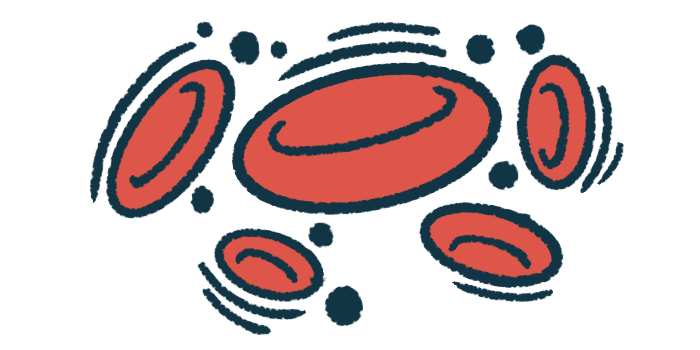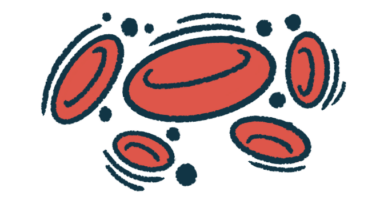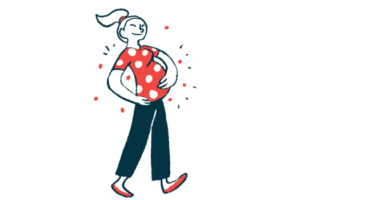Case: Empaveli effectively treats extravascular hemolysis in girl, 14
Therapy for adults now being tested in trial enrolling children 12-17

A teenage girl with paroxysmal nocturnal hemoglobinuria (PNH) who experienced extravascular hemolysis, which occurs when red blood cells are destroyed outside of the blood vessels, saw her condition significantly improve after starting on Empaveli (pegcetacoplan) — a treatment currently approved only for adults with PNH.
That’s according to a report from Canada, which detailed the case of the 14-year-old girl, for whom Empaveli normalized levels of hemoglobin, which is the protein that carries oxygen in red blood cells. Use of the treatment also reduced levels of hemolysis markers in the teen.
“Our report highlights the unique challenges of managing classical PNH in pediatric populations and supports considering [Empaveli] for children unresponsive to first-line C5 inhibitors,” the researchers wrote.
The case was described in “Pegcetacoplan for Breakthrough Hemolysis in an Adolescent With Classical Paroxysmal Nocturnal Hemoglobinuria on Eculizumab,” published as a Letter to the Editor in the journal Pediatric Blood & Cancer.
In the U.S., Empaveli is approved strictly for adults with PNH. However, a Phase 2 clinical trial is now testing the treatment in adolescents.
A rare acquired disease, PNH is characterized by red blood cell destruction, called hemolysis, occurring both inside (intravascular) and outside (extravascular) blood vessels. The underlying cause of hemolysis is the abnormal activation of the complement cascade, a part of the immune system.
Intravascular hemolysis involves the complement protein C5, which is the target of the complement inhibitors Soliris (eculizumab) and Ultomiris (ravulizumab). Extravascular hemolysis, conversely, is linked to C3, a protein that’s located upstream of C5 in the complement cascade.
Empaveli works by inhibiting the activation of C3, which subsequently activates C5 and splits into C3a and C3b to trigger both intravascular and extravascular hemolysis.
Teen given Empaveli through compassionate access program
Here, a quartet of researchers in Vancouver described the case of a teen who sought treatment for abdominal pain, headache, fatigue, jaundice — a yellowing of the skin and of the whites of the eyes — and rusty-colored urine. A physical examination also showed pallor and a fast heart rate.
Laboratory work indicated low hemoglobin levels. Further, the girl’s lactate dehydrogenase and bilirubin levels were elevated, and haptoglobin was undetectable, indicating hemolysis. She also had low levels of platelets.
Further analysis indicated the girl had a high proportion of neutrophils and macrophages, two types of immune cell types, without GPI — glycosylphosphatidylinositol proteins. Most people with PNH have a mutation in the PIGA gene, which is normally required for the production of the GPI molecule. Thus, the girl was diagnosed with PNH.
Following diagnosis, she received a red blood cell transfusion and started treatment with anticoagulant medications and Soliris. The girl received vaccinations and started preventive antibiotic therapy to prevent meningococcal infections due to complement system inhibition.
Athough treatment decreased the girl’s LDH levels, she continued to have elevated bilirubin and reduced hemoglobin, requiring a blood transfusion, as well as persistent fatigue and occasional abdominal pain.
After seven months, the teen transitioned to Empaveli through a compassionate access program, and this normalized her hemoglobin levels and markers of hemolysis. She also reported significant improvements in quality of life and fully restarted her normal activities.
Side effects during treatment with Empaveli were mild skin irritation and bruises at the injection site, per the researchers.
Given the significant impact of ongoing [extravascular hemolysis] on clinical and patient-reported outcomes targeting proximal components of the complement pathway, such as C3 inhibition, provides a promising alternative for patients with an inadequate response to C5 inhibition.
A global Phase 2 trial (NCT04901936) is now testing Empaveli in adolescents with PNH. Sponsored by Apellis Pharmaceuticals, which codeveloped the treatment, it’s now enrolling pediatric patients, ages 12-17, in the U.S. and elsewhere. The study’s goal is to evaluate the safety, effectiveness, and pharmaceutical properties of Empaveli in PNH patients in this age group.
In this case, the researchers noted, Empaveli was found to work when first-line treatment did not.
“Given the significant impact of ongoing [extravascular hemolysis] on clinical and patient-reported outcomes targeting proximal components of the complement pathway, such as C3 inhibition, provides a promising alternative for patients with an inadequate response to C5 inhibition,” the researchers wrote.








